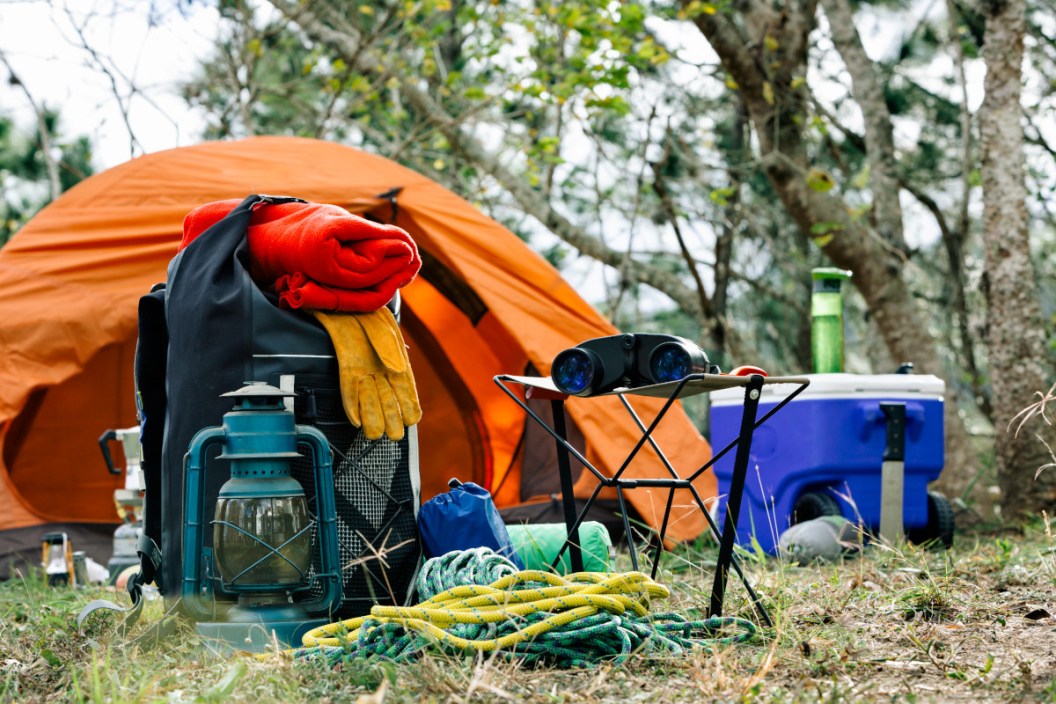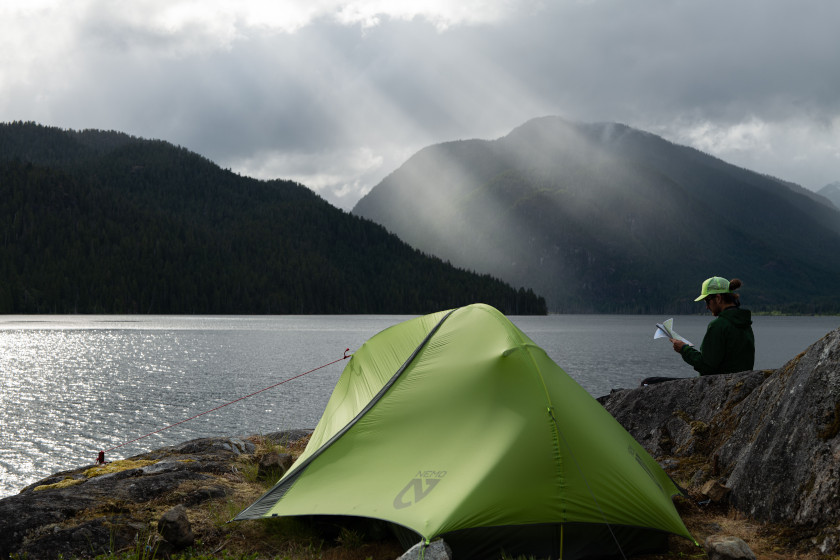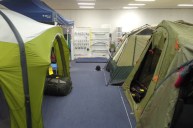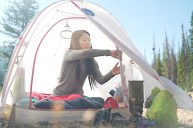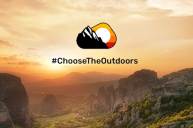When it comes to just about any product, people are always looking for the next best thing. Companies invest millions into continuously innovating and trying to stay ahead of current trends. There's no doubt all that manufacturing comes with a cost to our planet in the forms of pollution and waste. Which is why it seems a bit hypocritical for many outdoor brands to proclaim their love for the world's wildest and most open spaces on one hand, and simultaneously produce more waste that litters up nature on the other. But the winds of change are unquestionably in the air, as I found out while attending Outdoor Media Summit in Lake Tahoe over Halloween weekend. I sat in on several lectures and talked to reps from some of the industry's top outdoor brands. The word I kept hearing was "sustainability."
There's no doubt many companies are now waking up to the realities of the products they produce, and the byproducts of the work to produce them being in direct conflict with nature. There's a big push for more sustainable materials in the camping and hiking spaces. However, perhaps the most interesting idea is an embracing of used gear sales by some of the top brands in the industry. While sitting in on a "recommerce" lecture, I learned a lot about what these companies are doing to reduce their carbon footprint and their impact on the environment.
The Impact of Producing Gear
To understand why reselling old gear is so important, it's vital to know just how much carbon byproduct is being produced for equipment. At the lecture, Theresa McKenney, the director of sustainability at NEMO equipment, spoke about how the small camping gear manufacturer has already made a commitment to cut its emissions intensity in half over the coming years. NEMO is a rather small brand that doesn't have a retail footprint anyway. It sells direct to consumers through its website and to small mom-and-pop shops all over the country. Still, manufacturing high-quality tents, sleeping bags, pads, and camp furniture is going to produce some carbon emissions.
"The last two or three years we've been working really hard to understand our carbon footprint," McKenney said. "Because of our business model, our emissions are really in our product."
The company has done its homework, and it's determined that manufacture of its furniture produces around 60 kilograms of carbon. Tents produce 40 kilograms, sleeping bags produce 12, and sleeping pads produce 4 kilograms of carbon. It has estimated that roughly 87% of all its carbon emissions happen before the gear leaves the factory.
NEMO has done some experimenting to try to get those carbon emissions down. One of its first sustainability attempts was a tent that used bamboo poles and recycled fabrics.
"It was about $800—a little too ahead of the curve perhaps," McKenney said.
Still, it didn't get discouraged. It kept experimenting. It soon found that switching to a largely recycled polyester results in a 46% carbon emissions reduction. NEMO has plans to launch some new sleeping bags in 2023 that will use leftover fabric and insulation from the manufacturing process in the draft tube of the bag.
"We are really focused on getting into our supply chain and decarbonizing it as much as we can," McKenney said. "We won't be able to hit that goal on material swaps alone."
Which is why NEMO and several other brands are starting to think more about the longevity of their products, and how to keep those products circulating on the market after the original buyer isn't using them anymore. This is where used gear and recommerce comes into play. NEMO is one of the smaller brands to recently embrace it. It is partnering with REI, and Cotopaxi—another sustainable outdoor gear brand—to launch its recommerce operation without a physical storefront of its own. But it's not alone in diving into used gear sales. More outdoor brands are starting to team up to build a segment of their business entirely upon resale of used gear as a way to help offset their carbon footprint.
Used Gear as a Sustainability Tool

Smith Gado via Getty Images
The concept of used gear isn't new, although the idea of using it to reduce your carbon footprint might be. Storied outdoor retailer REI has been in the used gear business for more than 60 years, and it all happened by chance with its very first "garage sale," which is the co-op's most anticipated sale every year. It offers opportunities to save some serious cash on used gear that might otherwise be unaffordable to many outdoor enthusiasts.
"The very first garage sale happened when a flood threatened to put the co-op out of business in our very first flagship store," said Laura Kelley at the lecture.
Kelley is REI's senior manager of their recommerce business. That flood was caused by a broken pipe that flooded the store's inventory room. The insurance claims only went so far, so the co-op had to get creative and used a water damage sale to help keep REI in business. However, in the process, it learned there was a viable market for used outdoor gear at discount prices.
REI famously has one of the most generous return policies of any sporting goods retailer today, and many of its returns now make their way into these sales. However, REI wants to do more. Like NEMO, it's also looking closely at its carbon footprint on the world.
"We have some pretty lofty goals for the co-op more broadly to be a 50-million-member co-op by 2030, and to reduce our carbon footprint by 33% by 2030," Kelley said. "Those two goals are in direct conflict with one another. You can't sell more gear and apparel to more members and at the same time reduce your carbon impact unless you make some drastic changes.
"Seventy percent of our carbon footprint comes from manufacturing the new products that we sell, so you either have to strip the carbon out of the manufacturing process, which our teams are actively working on, or find new ways to get more gear and apparel into people's hands, and that's where Re/Supply comes in."
According to REI, buying used gear instead of old helps avoid carbon emissions of 50 percent or more depending on the type of product. However, at the same time, it cannot simply rely on returns for this aspect of the business. Which is why REI started its trade-in program. Co-op members can earn gift cards for trading in gently used gear, which is then put back on the market at a more affordable price. Kelley said it's a win-win scenario because it allows those who want to upgrade their equipment a chance to do that and get a little back for their old gear. For new outdoor enthusiasts, it lowers the bar to entry by allowing people to pick up quality gear at more affordable prices.
"We really kind of look at this as a two-sided marketplace for customers to buy and sell used gear," Kelley said. "And with that we also rebranded the Re/Supply, which we think really speaks more to the value that used gear brings to the table and to a younger generation of customers that are already fully bought into the secondhand space and really seeking retailers and brands that will align with those values where they shop."
Kelley also said REI has found it a great way to keep members engaged with the co-op itself. The value of the program then goes far beyond just reducing the company's carbon footprint.
Interest in Used Gear is Growing
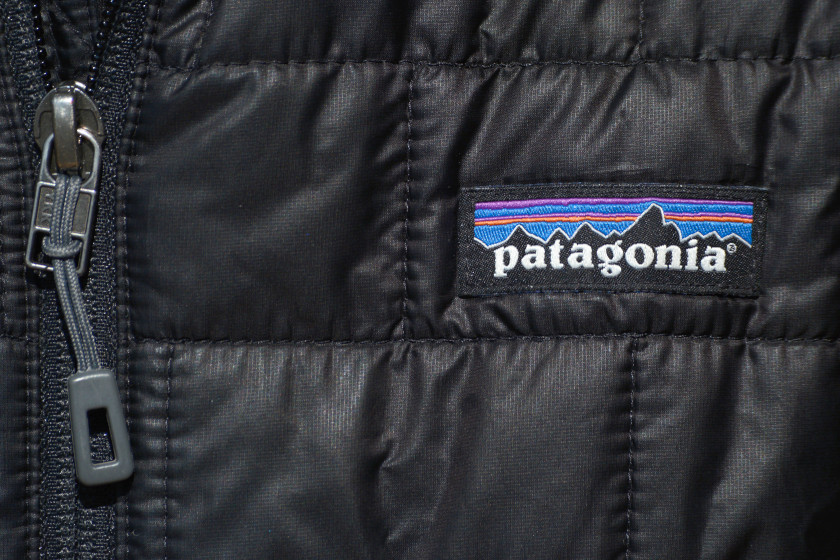
Robert Alexander via Getty Images
Patagonia is another brand that has wholly embraced environmental concerns. Its founder made worldwide headlines when he created a $3 billion trust for environmental activism. It's safe to say the brand has also embraced the idea of used gear as its business model of the future. Launched in 2013, it calls its used market "Worn Wear," and it's been highly successful so far. Like REI and NEMO, Patagonia took a step back to assess everything within its business from a sustainability standpoint. Patagonia now partners with some of the same third-party vendors as REI and NEMO. Brands like Trove operate a recommerce operating system for retailers. Patagonia just launched the first brick-and-mortar retail outlet in Chicago. The response was overwhelming on day one.
"We were really pleased to see we had lines around the block, and we sold out of used gear in an hour," said Lauren Bigelow, Patagonia's worn wear marketing manager.
Still, Patagonia feels it can do more. For Bigelow, it's important for companies like this to educate customers about why used gear programs are important, and why the companies are doing this kind of work. Patagonia sees that the responsibility for ensuring products don't just end up in a landfill relies on two parties: customers and the company itself.
To communicate this type of information, Bigelow finds that storytelling may be a company's best tool for the job. Specifically, she wants to see more stories that highlight people who have used the same gear for years on end to underscore the value of keeping things rather than just discarding them a few years down the line.
"As someone who works in the brand marketing and storytelling space, this is kind of the sweet spot," Bigelow said. "I spend a lot of time understanding customer behavior and how to communicate everything that we're doing, to actually try to spark the change that we're trying to see."
It hasn't been easy to do that, and Bigelow notes it has had some real challenges in getting these types of messages out on already oversaturated social media channels, and because used Patagonia wear is offered on a few different websites. Eventually, the company would like to simplify things to the point that someone could choose to buy new or used directly from the company's website.
The even longer-term goal is to slow production on new outdoor gear completely, which would go a long way toward helping with the company's greater carbon footprint goals. There are obvious challenges to getting the unused merchandise back into stores and the hands of new consumers, but these companies are working to develop solutions to these issues. However, as more outdoor enthusiasts become more environmentally conscious, it seems to be the natural direction outdoor gear sales will go.
"At some point we'll say, 'Hey, we've made enough puffy jackets, we're good,'" Bigelow said. "We're going to work on getting the supply that's out in the world back, and reselling it to people, because that's what we believe in."
For more outdoor content from Travis Smola, be sure to follow him on Twitter and Instagram. For original videos, check out his Geocaching and Outdoors with Travis YouTube channels.
